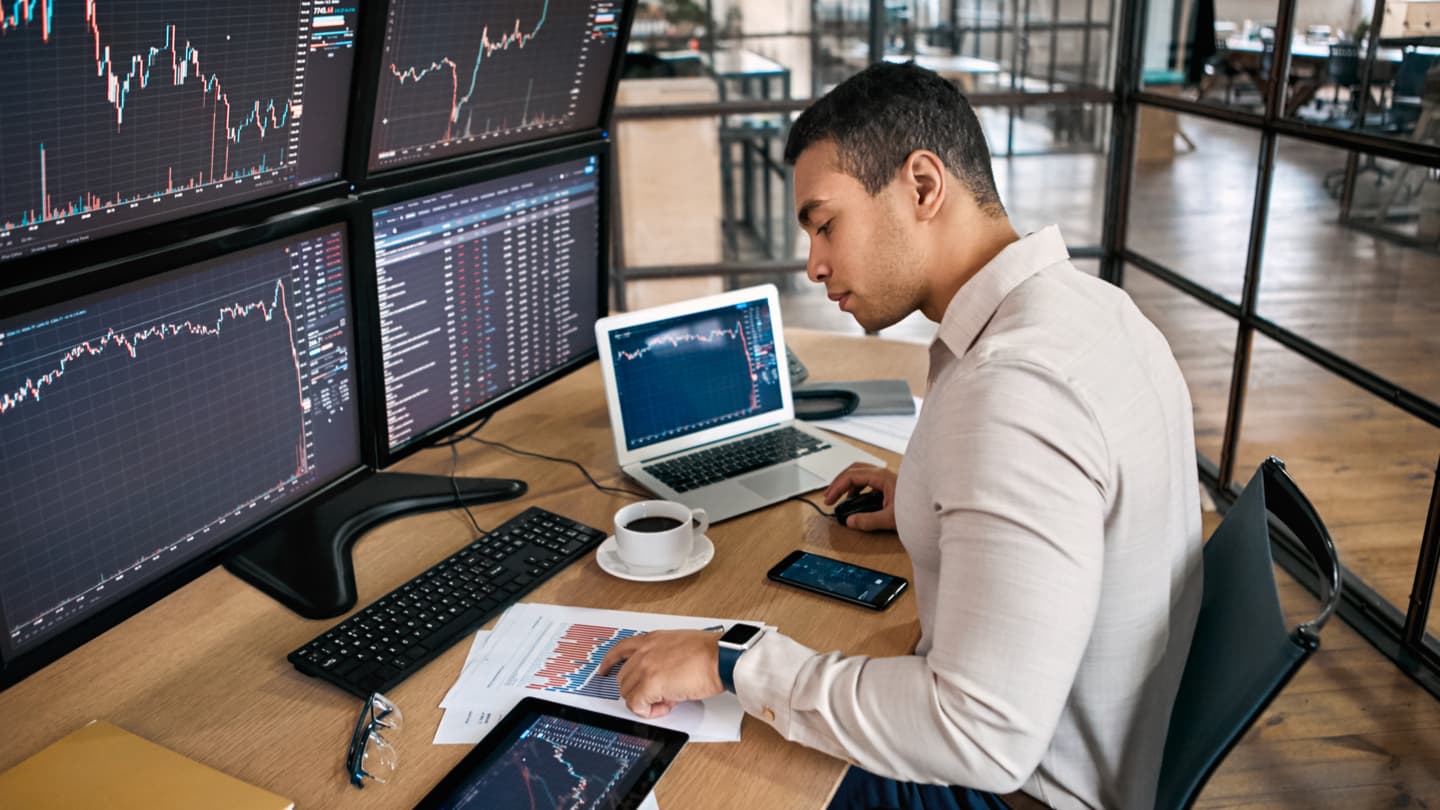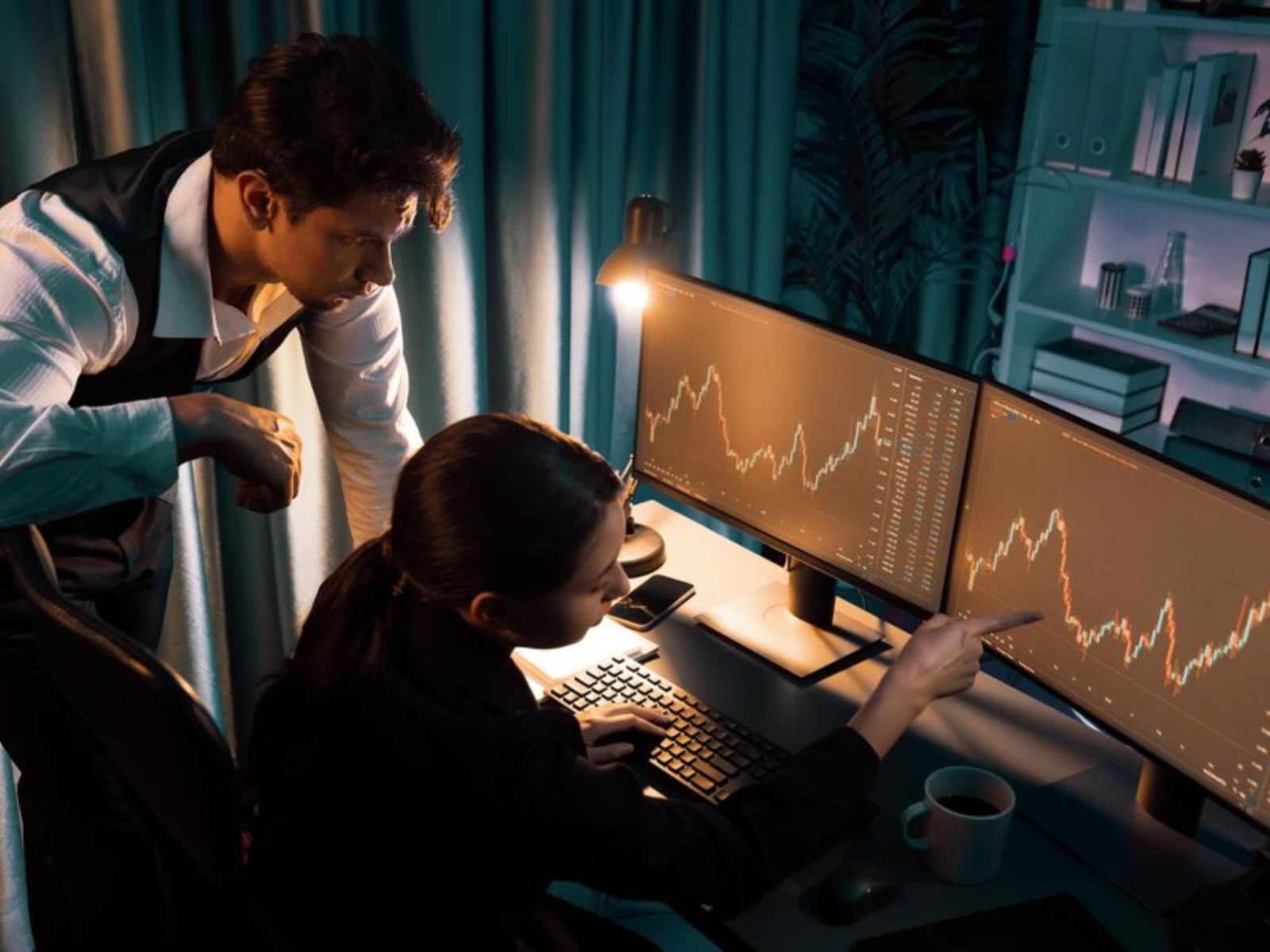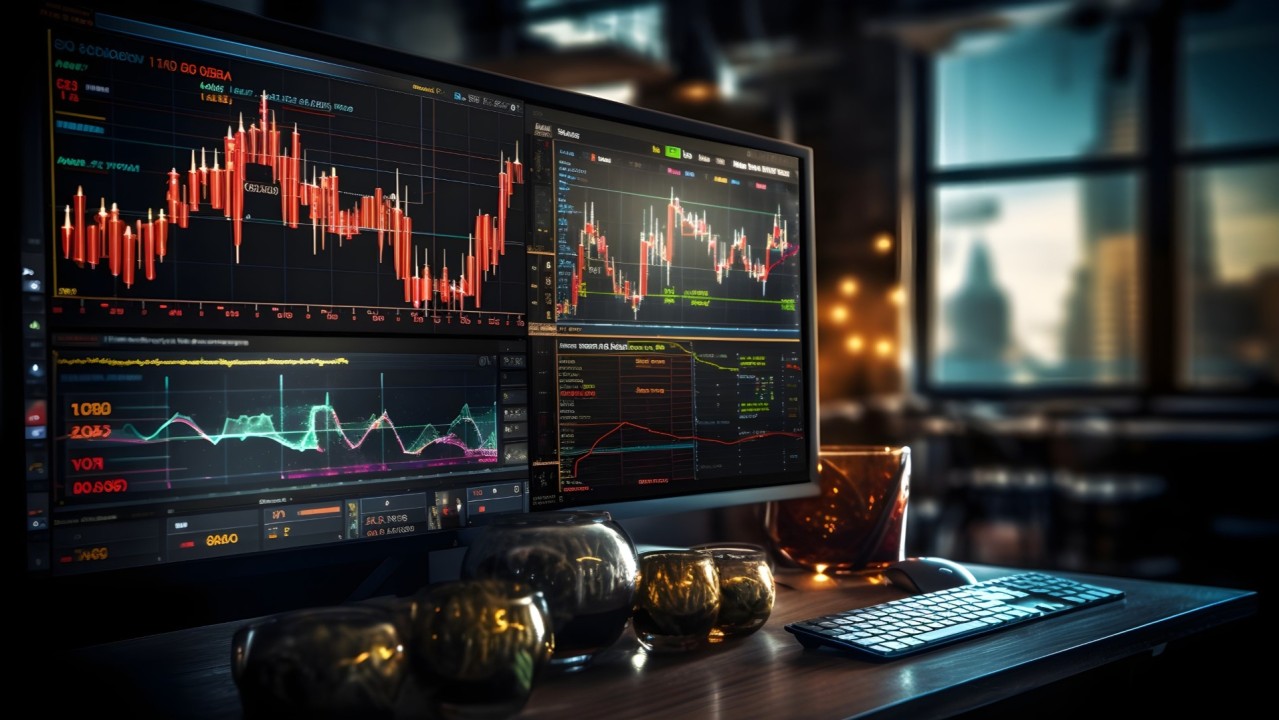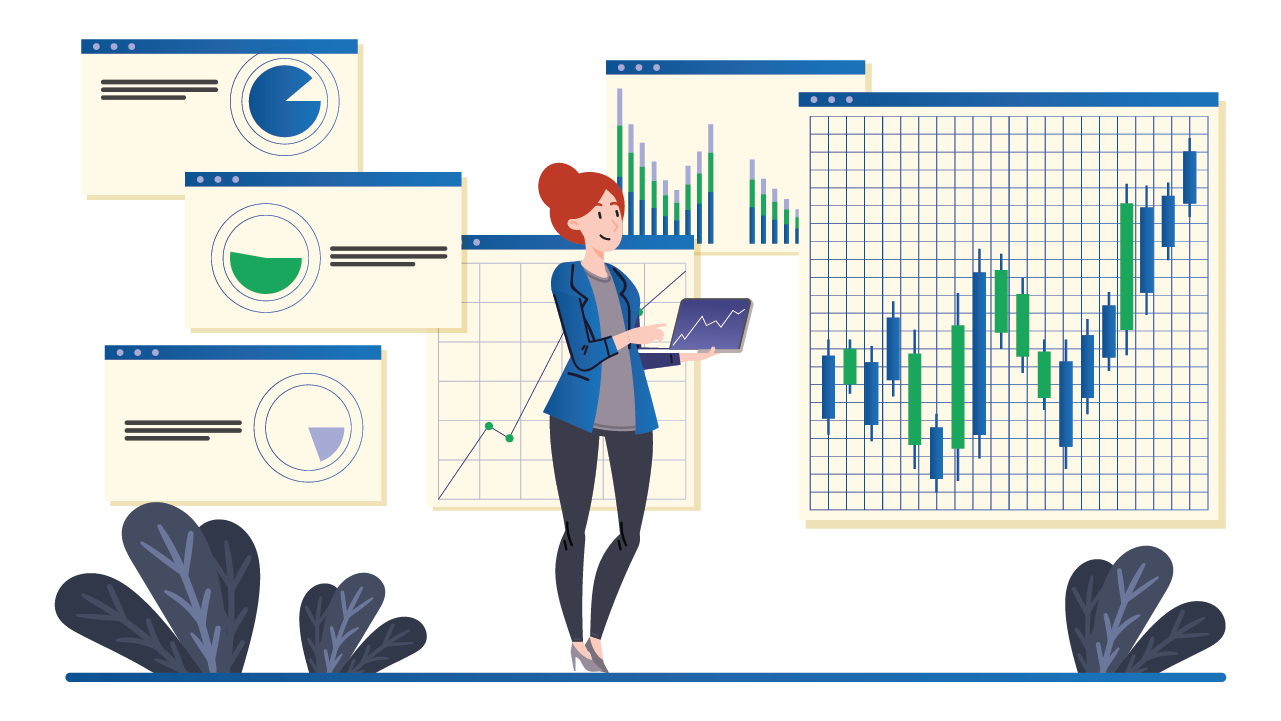You stare at a live chart late at night, wondering whether those price swings, indicators, and economic headlines mean one thing: Is Forex Trading Hard? Between currency pairs, leverage, pips, and sudden market moves, it can feel overwhelming to learn technical analysis, fundamental analysis, and risk management all at once.
This guide breaks those pieces into a simple learning path, from demo account practice and backtesting to building a trading plan and sharpening your trading psychology, to help you gain a clear, step-by-step roadmap that simplifies the complex forex market. Will you focus on charts, rules, or money management first?
To make the roadmap easier to follow, Goat Funded Trader's prop firm pairs structured evaluation, coaching, and funded account opportunities, allowing you to practice with clear rules and transition to live trading with real capital.
7 Steps to Learn Forex Trading

1. Learn the Fundamentals of Forex Trading
Before entering the forex market, it is crucial to establish a solid foundation in the basics. Forex trading involves exchanging one currency for another in pairs, and prices fluctuate based on the balance of supply and demand, which is influenced by global economic events. Familiarity with standard terms, such as pips (price movements), spreads (the difference between the buy and sell prices), leverage (the ability to borrow power), and margin, is crucial for navigating this complex market safely.
Learners should also understand how the forex market operates around the clock across different time zones, providing high liquidity and numerous opportunities. Understanding how geopolitical events, interest rates, and economic data affect currency values provides a foundation for making informed trading decisions. A solid understanding of these fundamentals helps reduce the risk of costly mistakes.
Taking the time to study trusted educational materials, forex guides, and tutorials helps build this foundation. Without grasping the basics first, beginners may struggle to keep up with the fast-paced and volatile nature of forex markets, leading to poor performance and emotional trading.
2. Select a Reliable Forex Broker
Choosing the right broker is a critical step that impacts the entire trading experience. Well-known financial authorities should regulate a reputable broker, provide transparent fees, tight spreads, and a user-friendly trading platform. Investigating broker reviews and their regulatory status ensures the safety of your funds and fair market practices.
Additionally, the broker should offer access to a variety of currency pairs, reliable customer support, and educational resources that cater to beginners. Many brokers offer demo accounts, allowing new traders to practice without financial risk. Selecting a platform that is compatible with your device and offers useful analytical tools makes trading more manageable.
Since brokers differ in terms of costs and services, take the time to compare options before making a commitment. Selecting the wrong broker can lead to technical issues, hidden fees, or poor execution speed, which can severely impact your trading success and capital preservation.
3. Open and Use a Demo Account
Demo accounts are virtual trading accounts funded with simulated money, enabling beginners to practice trading in real market conditions without risking their actual capital. This step will enable learners to familiarize themselves with placing orders, observing price movements, and testing strategies safely and effectively. Using a demo builds confidence and skill before transitioning to live accounts.
Trading through a demo environment provides crucial hands-on experience while avoiding the emotional and financial pressures associated with actual losses. It is a risk-free playground to understand how different trading instruments work and to explore tools such as stop-loss and take-profit orders that manage risk.
Spending ample time with a demo account helps identify what does and doesn't work in your approach. Jumping into live trading prematurely often leads to costly errors. The demo serves as an invaluable step to polish your skills and develop a trading routine.
4. Build a Forex Trading Strategy
A solid trading plan is the blueprint that guides your decisions and manages your risk. It outlines your financial goals, trade size limits, risk tolerance, entry and exit rules, and strategies for handling losses. This plan helps maintain discipline, avoiding impulsive decisions driven by emotions like fear or greed.
Planning also involves selecting a trading style that fits your personality—such as scalping, day trading, swing trading, or position trading. Each style demands different time commitments and risk management techniques. Testing your style with backtesting or paper trading refines the strategy’s effectiveness.
By committing to a well-defined plan and regularly reviewing it, traders enhance their ability to stay focused and consistent in their approach. Without a plan, trading becomes erratic, which increases losses and reduces the chances of long-term success.
5. Learn Technical and Fundamental Analysis
Successful forex trading relies heavily on mastering two key analytical skills: technical and fundamental analysis. Technical analysis involves reading charts, patterns, and indicators to forecast future price movements based on past data. It helps identify trends, entry points, and exit signals.
Fundamental analysis focuses on economic calendars, monetary policies, geopolitical events, and key macroeconomic indicators, such as GDP growth and employment figures. Understanding how these factors influence currency strength enables traders to anticipate market shifts beyond price charts.
Combining both analyses provides a comprehensive view of the market. Continuous practice and study enhance your ability to interpret data accurately, minimizing guesswork. This balanced approach is crucial for adapting to changing conditions and improving trade outcomes.
6. Start Trading with Small Real Money Positions
Once confident from practice, begin live trading with small amounts of capital. Starting small helps manage the risk and emotional stress associated with real-money trading. Using low leverage initially minimizes exposure to significant losses while gaining practical experience.
Keep position sizes modest and apply stop-loss orders to protect your funds from significant drawdowns. Trading live reveals nuances such as slippage, order execution speed, and psychological factors that cannot be simulated fully in a demo. This stage is about learning to handle these challenges calmly.
Gradually increase trade size only after accumulating consistent success and emotional control. Rushing to big trades frequently leads to significant losses that could have been avoided by starting small and scaling up cautiously.
7. Review, Learn, and Adapt Continuously
Forex trading is a continuous learning process. After each trading session, review your trades to understand what strategies were effective and where mistakes occurred. Keeping a trading journal detailing trades, emotions, and outcomes sharpens your self-awareness and decision-making.
Market conditions change constantly due to geopolitical shifts, economic cycles, and technical factors. Successful traders remain adaptable by continually updating their strategies, discontinuing unprofitable techniques, and refining their plans in response to new information.
Regularly dedicating time to education, studying market news, and experimenting with improvements keeps your trading skills sharp. Persistence and adaptability make the difference between temporary luck and sustained profitability in forex trading.
Related Reading
- What Is A Lot Size In Forex
- How Much Do You Need To Start Trading Forex
- How Profitable Is Forex Trading
- What Is Swap In Forex Trading
- Forex Trading Account Types
- Automated Forex Trading
- Fibonacci Forex Trading
- Pros And Cons Of Forex Trading
- Forex Trading Profit Per Day
What is Forex Trading?

Forex Trading Basics: What It Means and How It Works
Forex trading is the buying and selling of one currency for another in the global foreign exchange market. Traders typically work with pairs, such as EUR/USD, and profit when the relative value between the two currencies moves in the expected direction. The market operates electronically between banks, brokers, hedge funds, corporations, and retail traders, and it is open 24 hours a day, from Monday through Friday.
Market Structure and When You Can Trade
The market operates as a network of participants across multiple time zones, starting with Asia, moving through Europe, and concluding with the New York session. High daily volume generates deep liquidity in major pairs, typically resulting in tight spreads and quick fills on orders. Liquidity drops in exotic pairs, and that affects spreads and execution speed.
Currency Pairs Explained: Majors, Minors, Exotics, and Regional Sets
Major pairs pair the US dollar with another large currency, like EUR/USD, USD/JPY, or GBP/USD. Minor pairs link strong currencies without the USD, such as EUR/GBP. Exotic pairs combine a primary currency with a currency from an emerging market, typically exhibiting wider spreads and greater volatility. Regional pairs group currencies by geography and trading relationships, and they react to regional economic news.
What Moves Prices: Economics, Policy, and Events
Interest rate differences, central bank policy, GDP and employment reports, inflation data, and trade flows all impact the supply and demand for currencies. Political events, elections, and geopolitical shocks can trigger sudden moves that technical patterns do not foresee. Traders use an economic calendar and news feeds to time entries and manage exposure.
Trading Tools and Strategies Traders Use
You can trade with technical analysis, fundamental analysis, or a hybrid approach. Technical traders analyze chart patterns, support and resistance levels, moving averages, and price action on platforms such as MetaTrader 4 (MT4) or MetaTrader 5 (MT5). Fundamental traders focus on macro trends such as interest rate differentials and balance of payments. Common strategies include breakout trading, trend following, carry trades, and mean reversion.
From Learning to Live Trading: Steps to Get Funded
After you prove a strategy with backtesting and demo results, migrate slowly to a funded live account with conservative sizing. Some traders choose funded trading accounts or a prop firm to access larger capital with defined risk rules. Funded options often impose rules and scaling plans that you must follow while trading live.
Practical Questions to Ask Yourself Before You Trade
What time frame fits your schedule? Which currency pairs match your chosen strategy? How much capital can you afford to risk while you learn? Answering these will steer your education, the platforms you use, and the way you manage risk on each trade.
Goat Funded Trader gives you access to simulated accounts up to $800K with the most trader friendly conditions in the industry: no minimum targets, no time limits, and triple paydays with up to 100 percent profit split, plus over 98,000 traders have already collected more than $9.1 million in rewards backed by a two day payment guarantee and a $500 penalty for delays. Choose your path to funding through customizable challenges or start trading immediately with instant funding options from this prop firm. Sign up to get access to up to $800K today, with 25-30% off.
What is the 5-3-1 rule in forex?

Why the 5 3 1 Rule Works for Traders Who Want to Learn Forex Trading
The 5-3-1 rule provides a clear structure for study and practice. Limiting focus reduces choice overload and speeds up skill acquisition in technical analysis, fundamental analysis, risk management, and trading psychology. When you learn forex trading, repeated, focused practice on fewer variables produces reliable pattern recognition and better trade management. Ask yourself which part of your process needs focus today: entry, exit, or position sizing.
Pick 5 Currency Pairs and Study Them Deeply
Select five pairs that align with your timeframes and interests. Many traders begin with majors like EUR/USD, GBP/USD, USD/JPY, AUD/USD, and USD/CAD because they offer liquidity and tighter spreads. Track each pair’s volatility, correlation, and reaction to economic releases. Use an economic calendar and follow central bank commentary to understand fundamental drivers. How closely do the pairs move together during your chosen session? Note differences in average daily range, typical push times, and news sensitivity.
Focus on 3 Trading Strategies and Master Them
Limit yourself to three specific strategies that suit your personality and time available. For example, pair a trend-following system with a breakout setup and a simple mean-reversion strategy for pullbacks. Define rules for entries, stop placement, take profit, and timeframes. Use technical analysis tools, such as moving averages, RSI, support and resistance, and volume, as filters. Backtest each strategy over several hundred trades on a demo account, then forward-test with a slight risk on a live account. Track win rate, average reward to risk, and expectancy.
Choose 1 Trading Session and Build a Routine
Select the session that fits your life and the pairs you monitor. The London session shows heavy activity for the EUR and GBP pairs. The New York session introduces USD-driven moves and increased volume during overlap with the London session. The Asian session can be quieter and more range-bound. Create a daily routine: pre-session prep with chart scan, news check, entries you will watch, and a post-session review in your trading journal. Consistency in timing enhances your ability to read price action and execute trades without emotional overreactions.
How to Learn Forex Trading While Using 5 3 1
Start with structured education: learn the basics of Python and Lot, leverage mechanics, order types, and margin. Use a demo account to practice entries, exits, and risk rules until you can execute the three strategies reliably. Backtest using historical data and run forward testing in a demo environment. Seek mentorship or a trading community for feedback, but verify claims with your own testing. Read books on technical analysis, trading psychology, and position sizing, and use online courses to build a step-by-step curriculum.
How to Evaluate and Adjust the 5 3 1 Choices
Review pair performance and strategy metrics on a monthly basis. If a pair shows low edge or high correlation with others, replace it and retest. If a strategy underperforms on forward testing, pause it and analyze edge, risk, reward, and execution slippage. Use objective criteria, such as sample size, statistical significance of results, and consistency across market regimes. Establish rules for when to rotate a pair or strategy to ensure adjustments remain disciplined.
Questions to Guide Your Next Practice Session
Which of your five pairs gave the best setups last month? Which of the three strategies produced the best expectancy? What adjustments will you make to your session routine this week? Answering these questions keeps the learning process focused and measurable.
Related Reading
- Forex Trading Candlestick Patterns
- Forex Trading Algorithms
- Risk Management In Forex Trading
- Forex Trading Day
- Minor Forex Pairs
- Forex Trading Vs Crypto Trading
- Advanced Forex Trading
- Copy Forex Trading
- Best Books On Forex Trading
- Best EA For Forex Trading
Tips for Beginners

Understand the Forex Market
Learn forex by starting with the basics: a currency pair displays the base and the quote; a pip measures movement, and lots determine the trade size. Study what moves prices: interest rate changes, inflation reports, central bank guidance, trade flows, and geopolitical events. Use an economic calendar to track news and learn fundamental analysis, then compare it with how charts react in real-time. Which currency pairs will you focus on first, and why?
Create a Trading Strategy and Stick to It
A trading plan should list entry signals, exit rules, position sizing, profit targets, and a review schedule. For beginners in currency trading, set a clear risk per trade, such as one percent of your account balance, and define your risk-to-reward ratio. Backtest your edge using historical data, log the results in a trading journal, and use those statistics to determine whether the setup is repeatable. What rules will you write down and follow every time?
Practice with a Demo Account
Open a demo account on a trading platform like MetaTrader to practice order types and observe spreads and slippage. Treat demo trades like real ones: size positions correctly, enter stops and take profits, and record each trade in your journal. Use the demo to practice backtesting, try different forex strategies, and build confidence in trade management before risking capital. How will you duplicate live conditions in your demo routine?
Use Market Analysis Tools
Learn technical analysis tools, including moving averages, RSI, Fibonacci retracements, candlestick patterns, trendlines, and chart patterns, to identify entries and exits. Pair those with fundamental analysis: monitor CPI, GDP, employment, and central bank statements to time higher probability trades. Use multiple time frame analysis, practice price action reading, and run scans for setups that match your strategy. Which indicators match your chosen timeframe and strategy
Set Clear Risk Limits
Decide upfront how much capital you will risk per trade and control leverage to avoid forced losses. Calculate position size from stop loss distance measured in pips, account risk percentage, and pip value for the currency pair. Keep margin requirements and potential drawdown in mind, and set limits on daily and weekly losses to stop cascading mistakes. Have you calculated position sizes for the typical stop loss distances you plan to use
Use Stop and Limit Orders
Place stop-loss and take-profit orders when you open a trade, so your plan executes without emotion. Learn order types: market, limit, stop, and trailing stop, and use trailing stops to lock in gains as a move extends. Watch for slippage during periods of high volatility and consider using a VPS if you run automated systems. Set your stop loss and take profit before you click buy or sell
Manage Your Emotions
Expect fear and greed, and design rules to handle them. Use a pre-trade checklist, keep position sizes small after losses, and log emotional state in your trading journal to find patterns. Avoid revenge trading by pausing after losing streaks and following a routine that includes sleep and breaks to reset decision-making. How will you detect emotional trades and stop them
Be Consistent and Patient
Consistency beats bursts of activity. Track expectancy, win rate, and average reward to risk in your journal and focus on improving one variable at a time. Backtest and forward test with small size, compound gains slowly, and avoid chasing setups that fall outside your system. Review performance regularly and set measurable improvement goals weekly to ensure ongoing progress.
Update Your Strategy When Needed
When market regimes shift or your goals change, update your strategy through a process: form a hypothesis, backtest, forward test on demo, then scale up slowly. Avoid curve fitting and maintain statistical significance before increasing risk. Document changes in your trading journal so you can evaluate which adjustments improved results. What hypothesis will you test next, and how will you validate it
Choose a Reliable Broker
Select a regulated broker with transparent spreads and fees, fast execution, and clean trade fills. Check platform availability, data feed quality, order types, and educational tools, such as webinars or forex courses. Test customer support response, funding methods, and protections such as negative balance coverage with a small live or demo account before committing larger capital. Have you verified the broker's regulation and run execution tests in a demo account?
Related Reading
- Forex Options Trading Strategy
- Best Laptop For Trading Forex
- Forex Trading Course For Beginners
- Forex Trading App For Beginners
- How To Choose The Best Forex Broker
- Best Forex Pairs To Trade During New York Session
- Forex Trading Strategies For Beginners
- Forex Algorithmic Trading Strategies
- Best Forex Pairs For Beginners
Get 25-30% off Today - Sign up to Get Access to Up to $800K Today

Forex trading tests skills, patience, and discipline more than intelligence. Success comes from a consistent process, not luck. Many new traders find the learning curve steep because they skip fundamentals, risk too much, or chase signals without a plan. Which of those traps are you most likely to fall into right now?
Mistakes New Forex Traders Make and How to Avoid Them
They risk too much on single trades, ignore journal lessons, over-optimize strategies for past data, and chase every indicator. They trade without a plan and confuse noise for a trend. Address these issues by enforcing a fixed risk percentage per trade, limiting the number of active setups, and reviewing losing trades for process errors. Who will hold you accountable to follow your rules?
How Funding Changes Your Learning Path and Scale
Access to funded accounts shortens the path from demo to meaningful size if you maintain discipline. Goat Funded Trader gives access to simulated accounts up to $800K with the most trader-friendly conditions in the industry. There are no minimum targets, no time limits, and triple paydays with up to 100% profit split. Over 98,000 traders have collected more than $9.1 million in rewards, all backed by our 2-day payment guarantee, which includes a $500 penalty for any delays. Choose between customizable challenges to prove skill or start trading immediately with instant funding options, and sign up to get access to up to $800K today with 25 to 30% off. Which funding path matches your current skill level?
How to Use a Funded Account While You Learn
Treat a funded account like a serious step up from a demo. Protect capital with firm risk rules, keep your journal, and scale only after consistent weeks of positive expectancy. Use the larger size to practice trade management and experience real psychological pressure without taking reckless risks. Which KPI will you use to decide to scale up?
Resources That Accelerate Learning
Select high-quality courses that incorporate live market examples, offer a transparent trading process, and provide instructor feedback. Utilize economic calendars, platform simulators, strategy testers, and online communities for testing ideas. Consider a mentor for accountability and faster feedback cycles. Will you allocate time each week for studying, practicing, and reviewing?
Performance Habits That Separate Traders Who Last
Sleep, routine, and a fixed review process matter. Review trades daily, assess weekly for risk and edge, and keep monthly metrics on expectancy and drawdown. Avoid switching strategies frequently and measure progress with numbers, not feelings. What habit will you adopt this month to keep disciplined?
.svg)
.avif)



.avif)





.svg)

.svg)